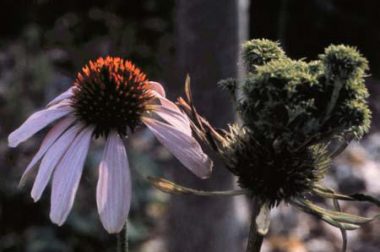
What is aster yellows?
Aster yellows is a chronic, systemic disease that affects over 300 species of broad-leafed, herbaceous plants in at least 38 families. Members of the aster family (Asteraceae), such as asters, marigolds, Coreopsis and purple coneflower are commonly affected by this disease. Vegetable crops such as carrots and potatoes are also susceptible. Aster yellows occurs throughout North America.
What does aster yellows look like?
Infected plants are typically stunted and twisted, with foliage that is yellow, purple or red. Infected plants are often sterile. Floral parts that are normally brightly colored may be green, and petals and sepals may become puckered and distorted. In purple coneflower, secondary flower heads (often in a cluster) may emerge from the primary flower head. In marigolds, flowers are often leafy and a muddy green-orange color. Infected carrots have purple/red leaves and form taproots with tufts of small, white “hairy” roots. Tap roots from infected carrots often have a bitter taste.
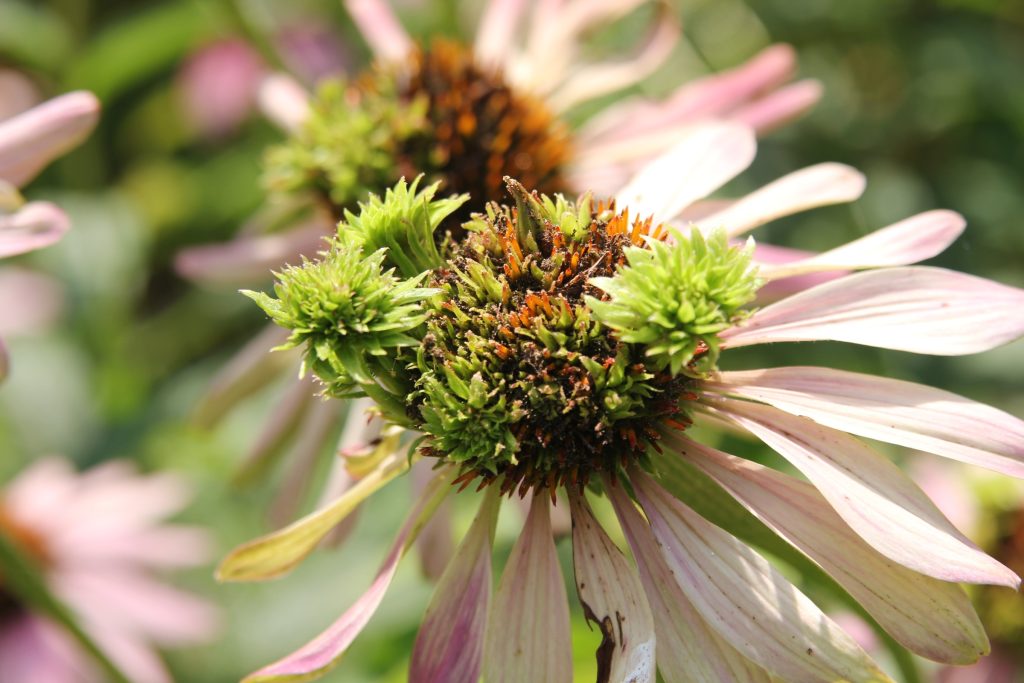

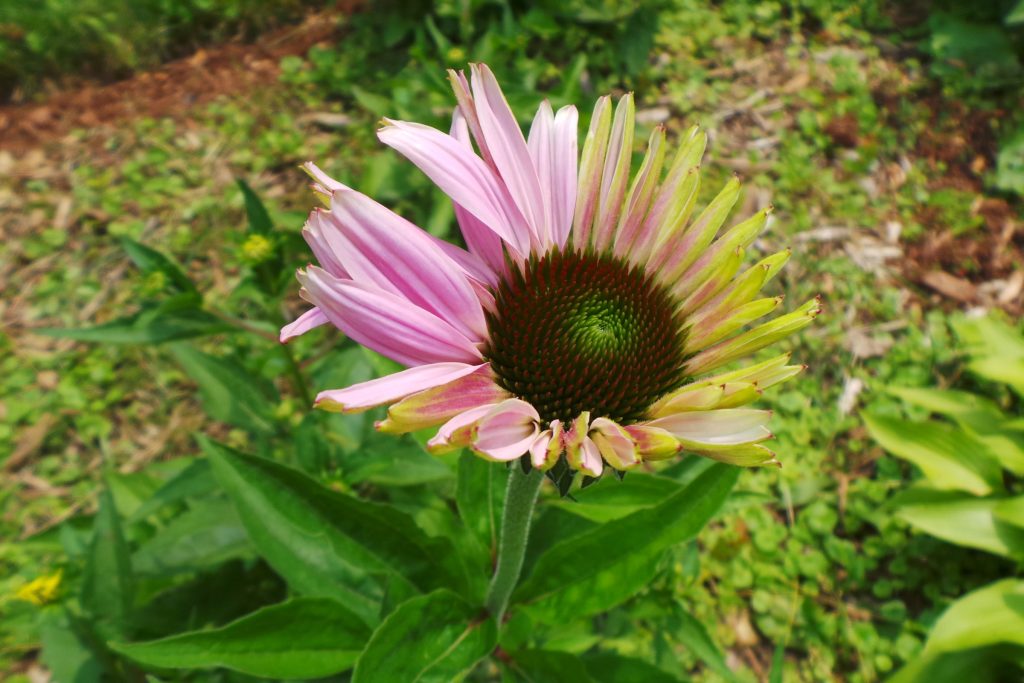
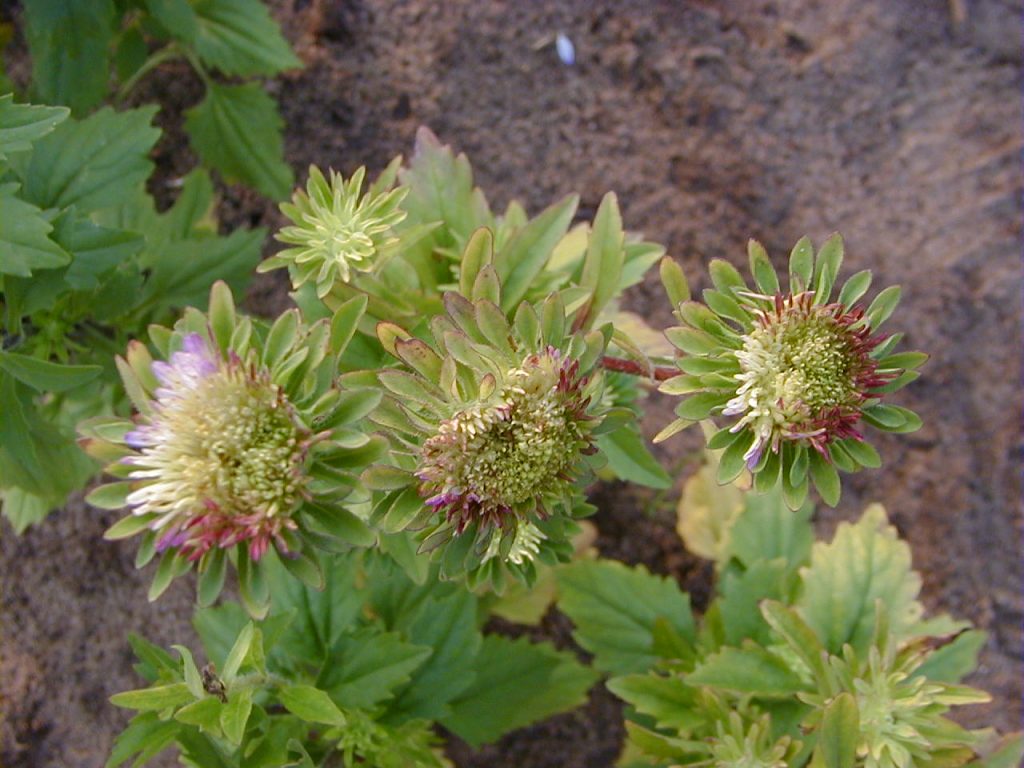
Where does aster yellows come from?
Aster yellows is caused by the aster yellows phytoplasma, a bacterium-like organism that lives in the food-conducting tissue (phloem) of plants. Aster yellows is rarely lethal. Thus, infected perennials can serve as a source of the aster yellows phytoplasma for many years. The aster leafhopper (Macrosteles fascifrons), a common insect, moves the aster yellows phytoplasma from plant to plant.
How do I save a plant with aster yellows?
There is no known cure for aster yellows. Plants suspected of having aster yellows, including weeds such as dandelions, should be removed immediately so that the aster yellows phytoplasma cannot be spread from infected plants to other non-infected plants in the area. Proper diagnosis of aster yellows is important because management of herbicide and eriophyid mite damaged plants does not require plant removal.
How do I avoid problems with aster yellows in the future?
Some herbaceous plants (e.g., geraniums and impatiens), as well as most woody ornamentals, are not susceptible to aster yellows. Therefore these plants should be used in areas where aster yellows is a problem. In landscape settings, attempts to control aster leafhoppers as a means of controlling aster yellows are typically not effective and are not recommended.
For more information on aster yellows:
Contact the University of Wisconsin Plant Disease Diagnostics Clinic (PDDC) at (608) 262-2863 or pddc@wisc.edu.
Authors: Brian Hudelson, UW-Madison Plant Pathology
Last Revised: 02/28/2024
D-number: D0007
Thanks to Lisa Johnson, Ann Joy and Ann Wied for reviewing this document.
A complete inventory of UW Plant Disease Facts is available at the University of Wisconsin-Madison Plant Disease Diagnostics Clinic website: https://pddc.wisc.edu.
Send a Plant Sample for Analysis
Be cautious when self-diagnosing plant health issues. Very few diseases can accurately be diagnosed by eye.
Contact the UW Plant Disease Diagnostics Clinic (PDDC), and for a small fee, clinic staff can examine a plant, determine the cause of the disease/disorder, and provide advice on how to control or prevent the issue.
Download Article





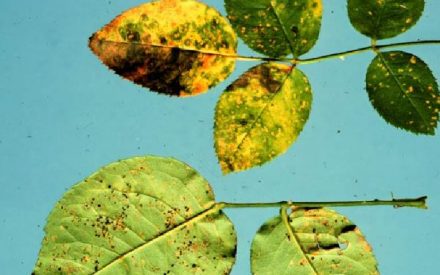 Rose Rust
Rose Rust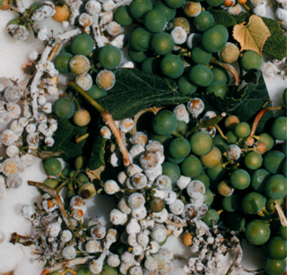 Downy Mildew
Downy Mildew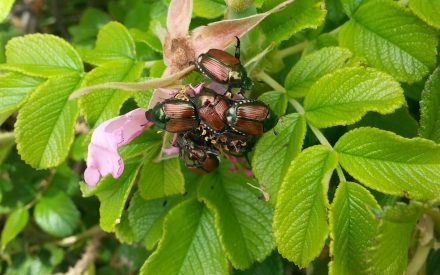 Japanese Beetle
Japanese Beetle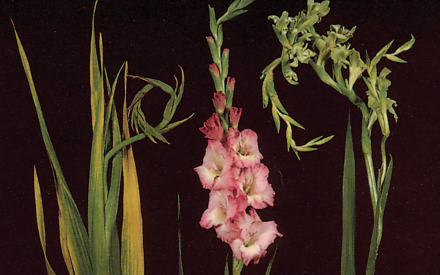 Gladiolus Disorder: Virus Complex and Aster Yellows
Gladiolus Disorder: Virus Complex and Aster Yellows


